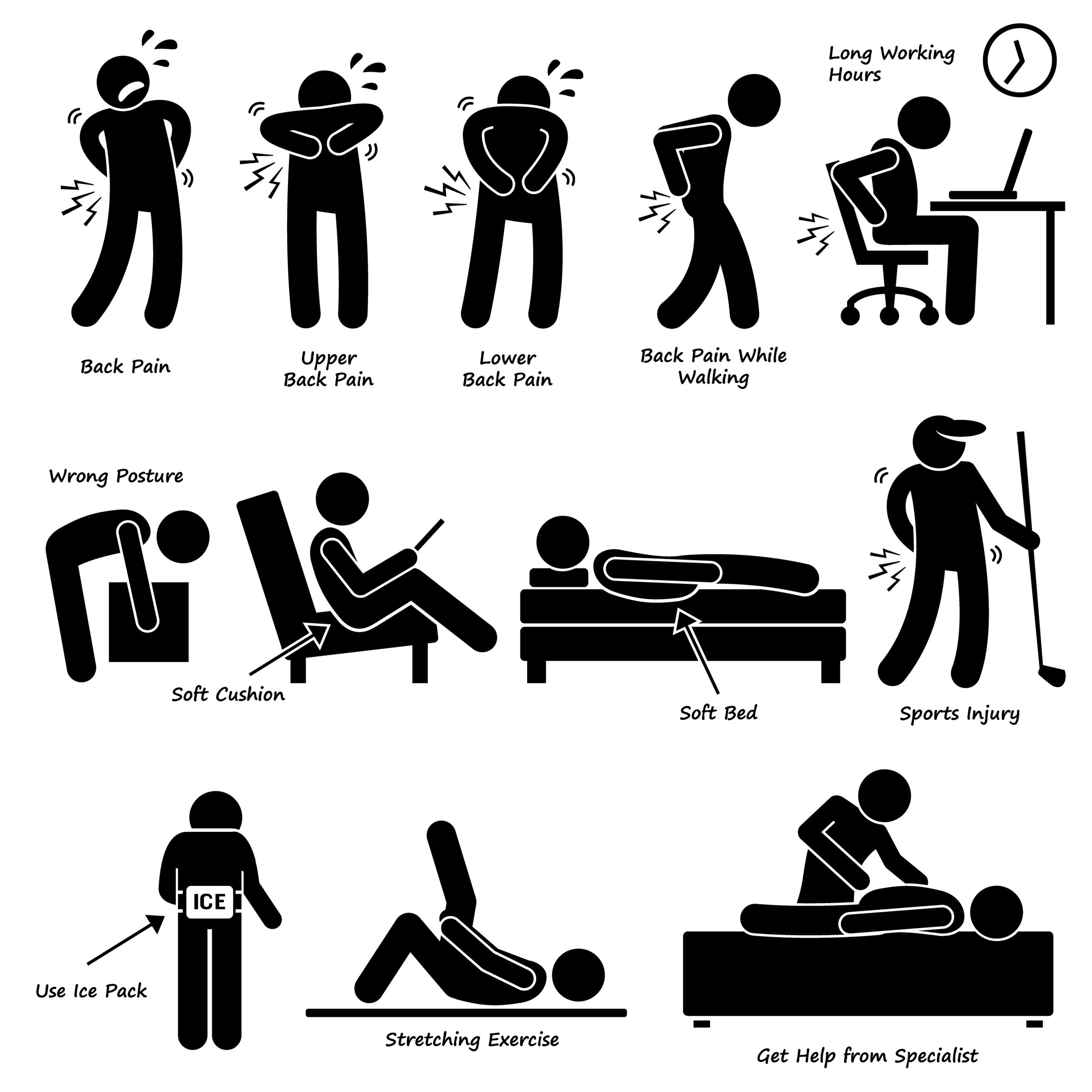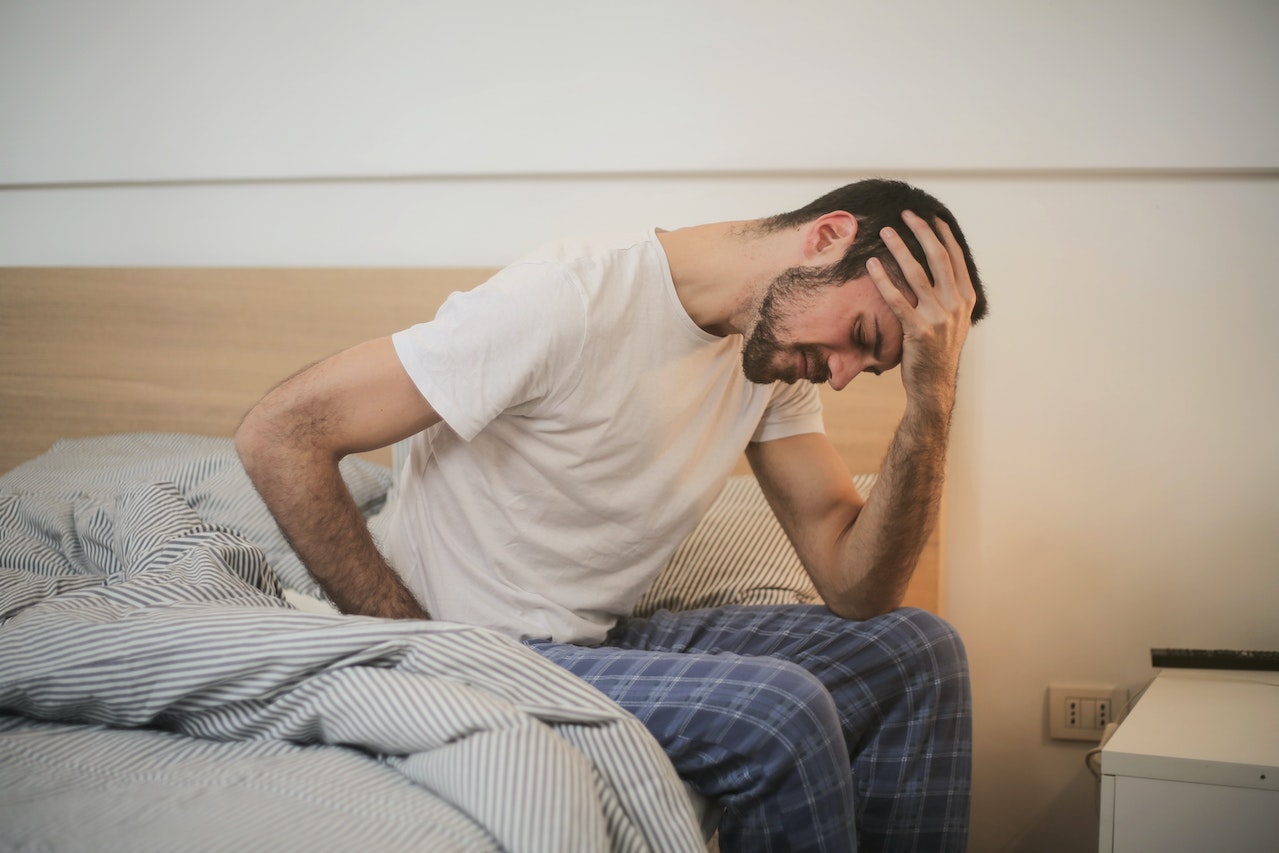Back Pain: Common Causes, Remedies, and What to do


So what is back pain, and what causes it?
Back pain is an ache or pain anywhere in the back, from the spinal area at the top of your shoulders, sometimes down to the buttocks and legs. Depending on the nerves involved, certain back issues may cause pain in other areas of the body.
The human back, also known as the dorsum, is made up of muscles, ligaments, tendons, disks, and bones, which carry the body and enable us to move around. When there’s a problem with any of these areas, back pain can occur.
Too Much Back Pain To Bear?
It has long been thought that one root cause of back pain is evolution, and our ability to walk on two legs. One joint study at the Simon Fraser University, the University of Liverpool, and the University of Sydney linked humanity’s evolutionary past, and spine shape, to back pain. (1)
While the evolution theory needs more research, there are many different types of back pain and various causes for it.
Although the origins of some back pain may be unknown, damage can result from trauma, activity, poor posture, or medical conditions such as disease. Back pain affects almost 80% of Americans at some point in their lives. (2)
Risk Factors For Back Pain
Many things can relate to a higher risk of developing back pain. (3)
- Job-related or work activities.
- Pregnancy: During pregnancy back pain may increase, however, in many cases symptoms subside after giving birth.
- Living a sedentary or inactive lifestyle: Inactivity may cause the back to become inflexible, frail, or deconditioned.
- Poor physical fitness: Exercise helps to maintain muscle mass and bone strength, and also increases blood flow which can alleviate pain and promote healing.
- Age: The risk of back pain is more common after the age of 30 years, because loss of muscle and bone strength increases with age.
- Obesity: Carrying excess weight can add stress to your lower back.
- Smoking restricts blood flow and oxygen to the discs, causing them to weaken.
- Genetic factors: A 2011 study found that genetics may play a part in lumbar disc disease and chronic back pain. (4)
- Medical conditions: Certain medical conditions may lead to back or spine issues. (5)
What Are The Different Types and Causes Of Back Pain?
Of the many different types of back pain, the most recurrent tends to be in the lower back, known as the lumbar region. This area is prone to strains and general tension that can result in injury.
Back pain can be acute (short term) lasting for a few days or weeks, or chronic (long term) and can last several months. Most back injuries, whether acute or chronic, will not require surgery.
Some of the different types of back pain are
Back Strains
- Muscles or ligament strain.
- Muscle spasm.
- Muscle tension.
- Damaged or herniated (slipped) disks.
- Stress from falling, sports, or injuries from a car accident.
- Fractures.
Everyday activities can lead to strains, spasms, or tension including:
- Lifting an object that is too heavy, or lifting it improperly.
- Making a sudden or awkward movement.
Poor Posture and Back Pain
Poor posture due to sitting in front of a computer for long periods, slouching in front of the TV, or where an awkward standing work position is unavoidable, may cause back pain. (13)
Other examples can include:
- Driving for long periods while hunched over the steering wheel.
- Sleeping awkwardly or on a mattress that does not support you well or keep the spine properly aligned.
Movement and Back Pain
Other everyday tasks may aggravate back pain such as:
- Twisting.
- Carrying a heavy or awkward load.
- Pushing or pulling something.
- Overstretching or extending your reach.
Degenerative Or Other Conditions
Degenerative or other conditions can also contribute to back pain or spinal injuries. These can be linked to disease, other health issues, or age-related factors due to wear and tear.
- Arthritis, including osteoarthritis and rheumatoid arthritis, can lead to an increase in inflammation of the vertebrae.
- Spondylosis: An age-related condition of the spine caused by wear and tear.
- Osteoporosis: A decrease in bone mass over time that may lead to fractures of the vertebrae.
- Sciatic nerve pain causing discomfort in the lower back, buttocks, and legs.
- Spinal stenosis, A condition that puts pressure on the spinal cord and nerves due to the narrowing of the spinal column.
Non-Spine Related Conditions
- Kidney stones can lead to sharp pains in the lower back, usually on one side.
- Endometriosis can cause a wide variety of symptoms, including lower back pain.
- Fibromyalgia: Both men and women can suffer wide-ranging symptoms from fibromyalgia such as back pain. (5)
Lifestyle Changes To Alleviate Back Pain
Certain lifestyle changes can be made to slow or stop the onset of back pain. Many of these changes can save you time and money from visiting a chiropractor, massage therapist, or other wellness professional.
Here are just a few:
- Remain active: Forget the old bed-rest myth and remain as active as you can. By doing so you can prevent stiffness and encourage blood circulation to the spine, thus promoting recovery. (6)
- Stretching: Underdeveloped or weak back muscles can cause or worsen low back pain. Stretching your back muscles may help reduce pain, and could help to prevent the problem from recurring. (7)
- Eat a healthy balanced diet: Eating well can help to combat weight gain and obesity. Being overweight can cause stress and add too much of a burden to your spine. (8)
- Smoking: Research has shown that people who smoke have a higher likelihood of back pain than non-smokers or those who used to smoke. (9) .
- Exercise: Staying active and exercising regularly can help to prevent and alleviate back pain. (10) By strengthening core muscles, particularly the back and abdomen can promote a healthier back. Exercise also produces endorphins that can block out pain. (11)
- Improve posture. Having good posture can help prevent pain, injuries, and some other health problems. (12)
Back pain, while sometimes frustrating and even debilitating, does not need to be life-changing, nor should it prevent you from living a full, active life. With some simple changes, many of the problems and causes of back pain can be eliminated or prevented. If you’re ready to experience a pain-free back, click here to learn more.
Always consult your chiropractor or general practitioner should back pain persist.
Sources
- https://www.sciencedaily.com/releases/2020/03/200305132047.htm#:~:text=%22For%20decades%2C%20scholars%20have%20assumed,the%20health%20of%20your%20spine.%22
- https://www.acatoday.org/Patients/What-is-Chiropractic/Back-Pain-Facts-and-Statistics/Back-Pain-Facts-and-Statistics
- https://www.ninds.nih.gov/Disorders/Patient-Caregiver-Education/Fact-Sheets/Low-Back-Pain-Fact-Sheet#:~:text=Age%3A%20The%20first%20attack%20of,muscle%20elasticity%20and%20tone%20decrease.
- https://www.spineuniverse.com/blogs/uribe/can-your-genes-cause-back-pain#:~:text=A%202011%20study%20on%20genetics,low%20back)%20may%20be%20inherited.
- https://www.healthline.com/health/low-back-pain-acute#causes
- https://www.mayoclinic.org/diseases-conditions/fibromyalgia/symptoms-causes/syc-20354780
- https://www.webmd.com/back-pain/ss/slideshow-back-pain-myths
- https://www.health.harvard.edu/healthbeat/stretching-and-strengthening-are-key-to-healing-and-preventing-back-pain#:~:text=Weak%20back%20and%20abdominal%20muscles,a%20recurrence%20of%20the%20problem.
- https://bmjopen.bmj.com/content/5/8/e007805
- https://www.ncbi.nlm.nih.gov/pmc/articles/PMC5081254/#:~:text=This%20study%20found%20that%20current,higher%20prevalence%20of%20back%20pain
- https://www.ncbi.nlm.nih.gov/books/NBK284937/
- https://www.healthline.com/health/endorphins#:~:text=Since%20endorphins%20act%20on%20the,eating%2C%20exercise%2C%20or%20sex.
- https://medlineplus.gov/guidetogoodposture.html









